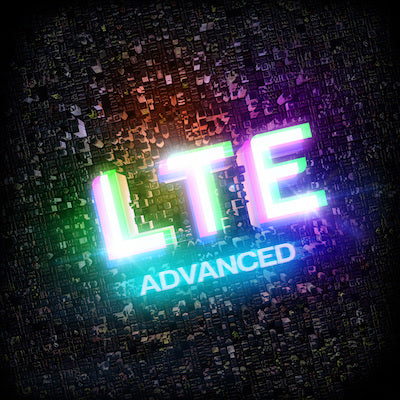Solutions for Managing LTE-A Signal Interferences
Apr 05, 2016

More and more we're seeing applications like video being run on smartphones, which is simply fueling the rapid demand for wireless data. LTE (which stands for Long Term Evolution) is the 4G wireless standard that is meeting this demand: 4G wireless is not only deployed in North America, it is currently being used throughout the world.
LTE-Advanced Technology.
LTE technology continues to involve, and today we're seeing LTE-A (LTE-Advanced) features being tested and applied to wireless 4G networks.
In areas where LTE is currently being deployed, both LTE and 3G technologies use the same RF channels on every sector; whereas earlier 2G technologies, such as GSM, were able to use different channels on adjacent sectors. Because the same frequencies are being used repeatedly, the interference between sites should be managed with special care, and this includes sectors on the same site.
For LTE to function effectively it is essential for high-performance base station antennas to radiate signal where it is required and to attenuate signal where it is not required. Networks with poorly designed networks or incorrectly deployed antennas will pay the price with reduced data throughput and sub-standard user experience.
CoMP and FeICIC Features.
Interference between sites is currently being managed by some LTE-A features, such as CoMP (Coordinated Multi-Point) transmission/ reception and FeICIC (Further Enhanced Inter-Cell Interference Coordination). These have been purposely designed to manage interference on the cell boundary. An example being that they can simultaneously control which cells use the same time-slot and frequency.
These facilities provide the greatest benefits when there's a light traffic load and when sites are located just a few hundred meters apart. However, benefits decline and there's less freedom to coordinate between sites, when traffic in the system increases to such a level that most timeslots are active.
Because LTE has severe interference issues, and because current interference management features have limited capabilities, it has become even more critical for today's high-performance base station antennas to maximize the performance of 4G wireless networks.
For maximum user experience and to improve data throughput, we need both high-performance antennas and new, innovative features.
Conclusion.
Managing LTE-A signal interferences is crucial because we're relying on LTE Advanced heavily to meet the demand for fast wireless data such as that required in videos on smart phones, machine to machine (M2M) and Internet of Things (IoT) applications. Utilization of features stated above will get us to prepare for even more demand for higher data tranfer speeds, higher bandwidth, and higher capacity that will be needed in the near future.
Share this post
6 comments


I wonder what signal interference issues have arisen with 5G on the scene. Does anyone know if there have been any noticeable problems with signal interference from different generations of cell phones today? You would think the people who developed 5G would know about past problems and plan around it, but we know that isn’t always the case, especially when we rush to produce something.
What is the function of a signal amplifier? Answer: A signal amplifier can refer to a number of devices, the basic purpose being to increase electrical oscillations. When applied here, they are a synonym for cell phone boosters, devices which greatly amplify an existing cell phone signal from a nearby cell tower so cell phone calls are clearer, data speeds are faster, and call quality is increased. A signal amplifier is another way to describe these devices. Hope this answers the question.
This interference sounds like it can be a real pain to deal with. I’ve heard the term “signal amplifier.” What is the function of a signal amplifier?
I’ve read some questions from people asking can cell phone towers interfere with TV reception and read some blogs about 4g LTE TV interference. The reality is that our world is changing by the second with new and improved technologies sometimes inadvertently (or carelessly) stepping over with others. There are things such as digital tv interference filters and lte filters that may help. However, things like this tend to be temporary as everyone finds a way to work around the problem so we can enjoy our TV shows and the benefits of LTE for our devices. It’s that proverb don’t throw out the baby with the bathwater.
Although I don’t think companies have an obligation to ensure strong cell phone signals so people can have fast data speeds and make calls without being dropped, I think it’s good business practice to have whatever devices are necessary to do so. A cell phone booster can make for clearer cell phone calls as can a DAS installation. Whatever works in your building, you should consider it as it makes for better customer satisfaction (and employee satisfaction if they’re using cell phones for business). I’m not talking about emergency responder calls. You’d better have those set up properly as you don’t want to get sued because you didn’t have the proper system in place.
I’ve been following technology closely since the early 90’s and I never envisioned the capabilities of our cell phones or the demand on cell phone networks to provide more power to stream data. It seems as if cell phones get more powerful faster than networks can keep up. Unfortunately, that means slow data speeds, dropped calls, and other problems. I am glad that cell phone boosters are available to help people get the connection speed they need. Love reading the tech info on this site.